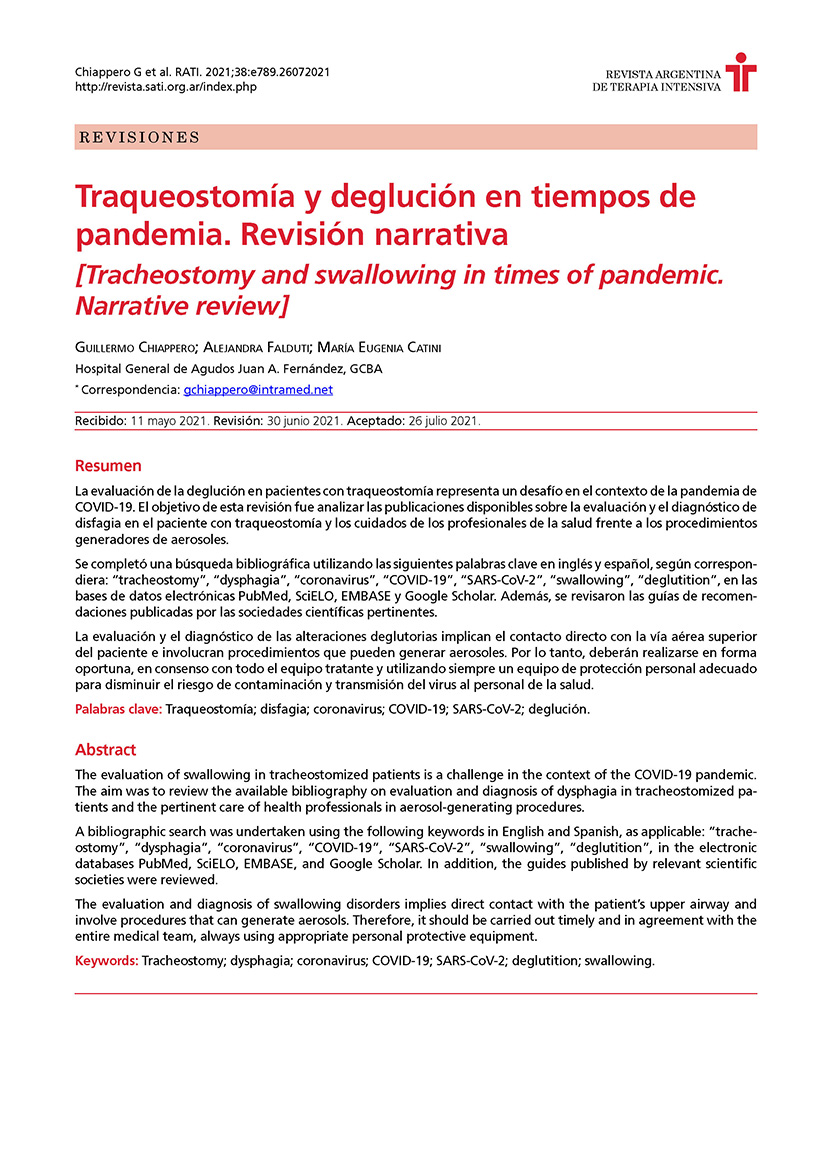Resumen
La evaluación de la deglución en pacientes con traqueostomía representa un desafío en el contexto de la pandemia de COVID-19. El objetivo de esta revisión fue analizar las publicaciones disponibles sobre la evaluación y el diagnóstico de disfagia en el paciente con traqueostomía y los cuidados de los profesionales de la salud frente a los procedimientos generadores de aerosoles.
Se completó una búsqueda bibliográfica utilizando las siguientes palabras clave en inglés y español, según correspondiera: “tracheostomy”, “dysphagia”, “coronavirus”, “COVID-19”, “SARS-CoV-2”, “swallowing”, “deglutition”, en las bases de datos electrónicas PubMed, SciELO, EMBASE y Google Scholar. Además, se revisaron las guías de recomendaciones publicadas por las sociedades científicas pertinentes.
La evaluación y el diagnóstico de las alteraciones deglutorias implican el contacto directo con la vía aérea superior del paciente e involucran procedimientos que pueden generar aerosoles. Por lo tanto, deberán realizarse en forma oportuna, en consenso con todo el equipo tratante y utilizando siempre un equipo de protección personal adecuado para disminuir el riesgo de contaminación y transmisión del virus al personal de la salud.
La revista no retiene los derechos de reproducción (copyright) por lo que los autores pueden volver a publicar sus trabajos con la sola mención a la fuente original de publicación.

